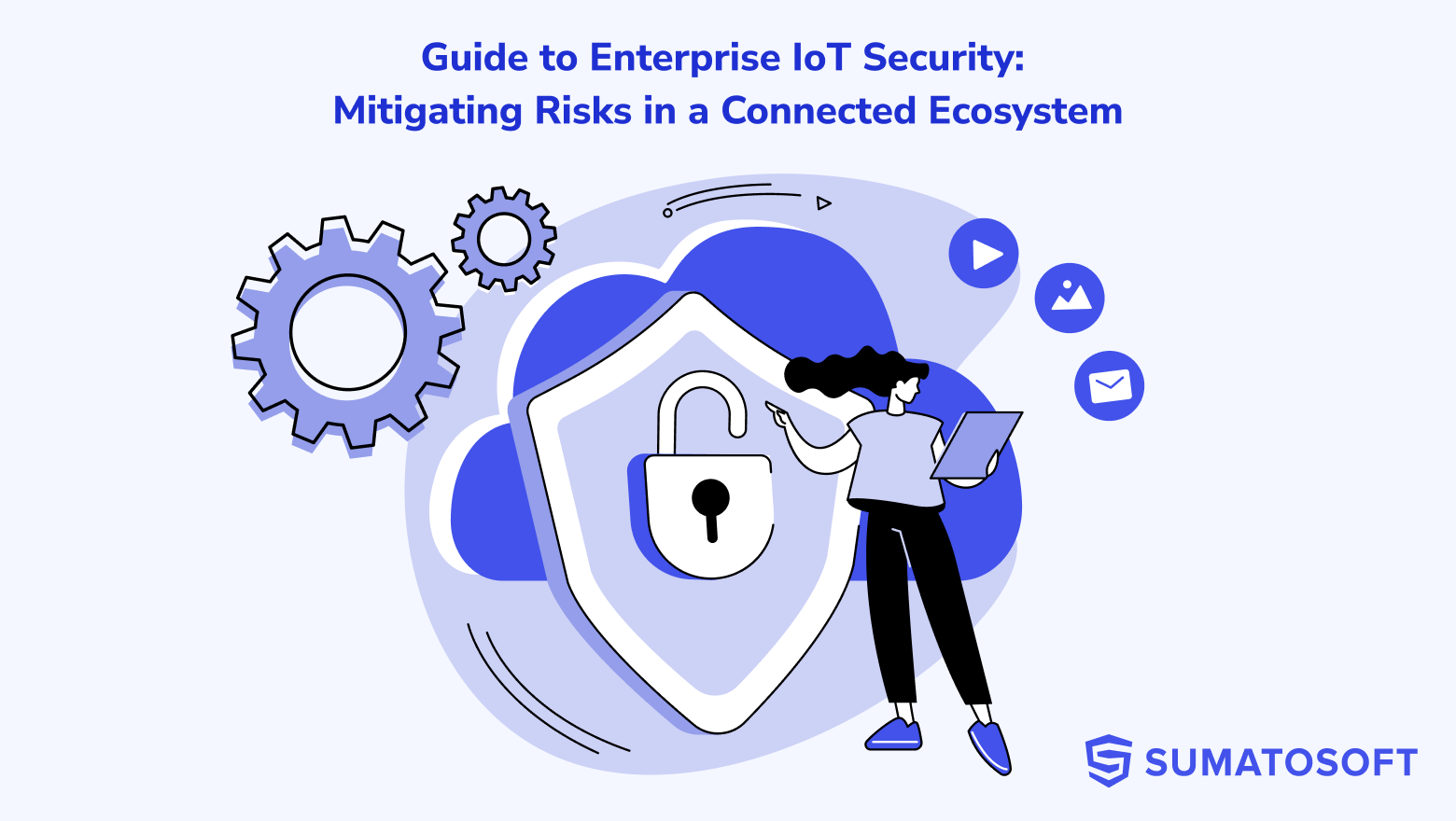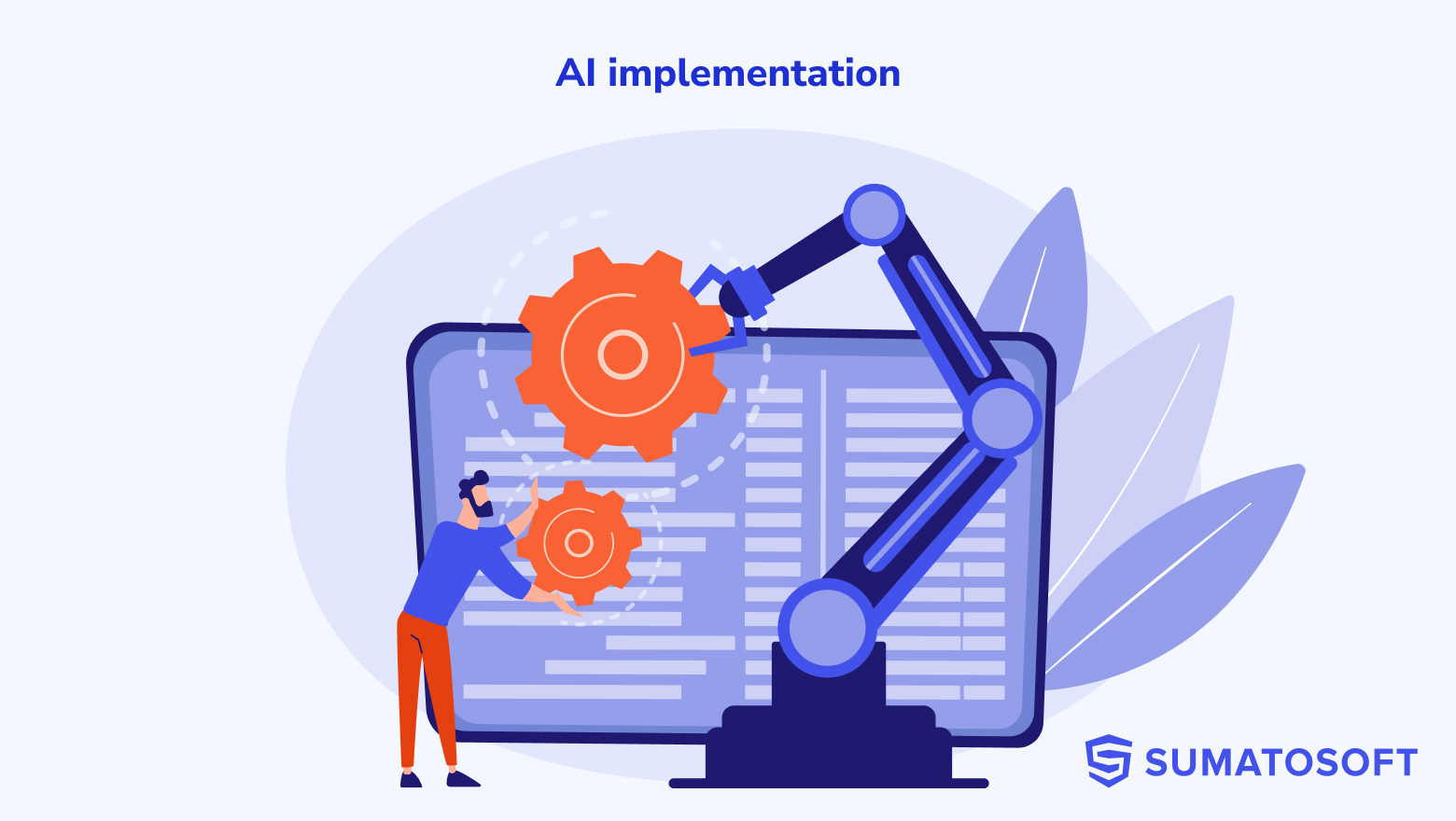Discovery Phase Playbook: How to Run, Who Involved, The Results
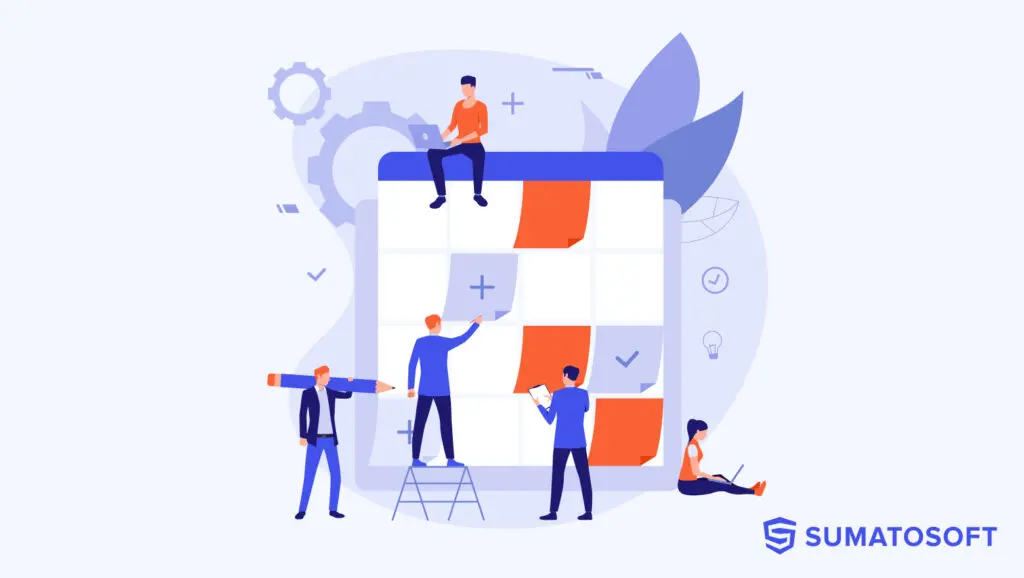
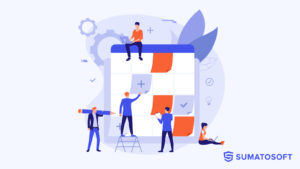
When it comes to wondering about the relevance of the development of additional systems or a new product, it can be tricky to assess risks, remove uncertainty and doubt, and make a final decision based on the data and not on the endless set of assumptions. Also, you may discover that you don’t have the necessary knowledge and experience to develop the necessary solution.
Unfortunately, projects fail. But there is an option to increase the chances of success up to 50%.
According to a McKinsey report, one of the world’s most prestigious consulting firms, 50% of projects fail because of poor requirement definitions. This is old data, we agree.
According to St. Cloud State University report, a leading public university in the Upper Midwest of the United States, 48% of projects experienced project time or budget overrun because of poor and incomplete requirements.
Reasons Companies Experience Time or Budget Overrun
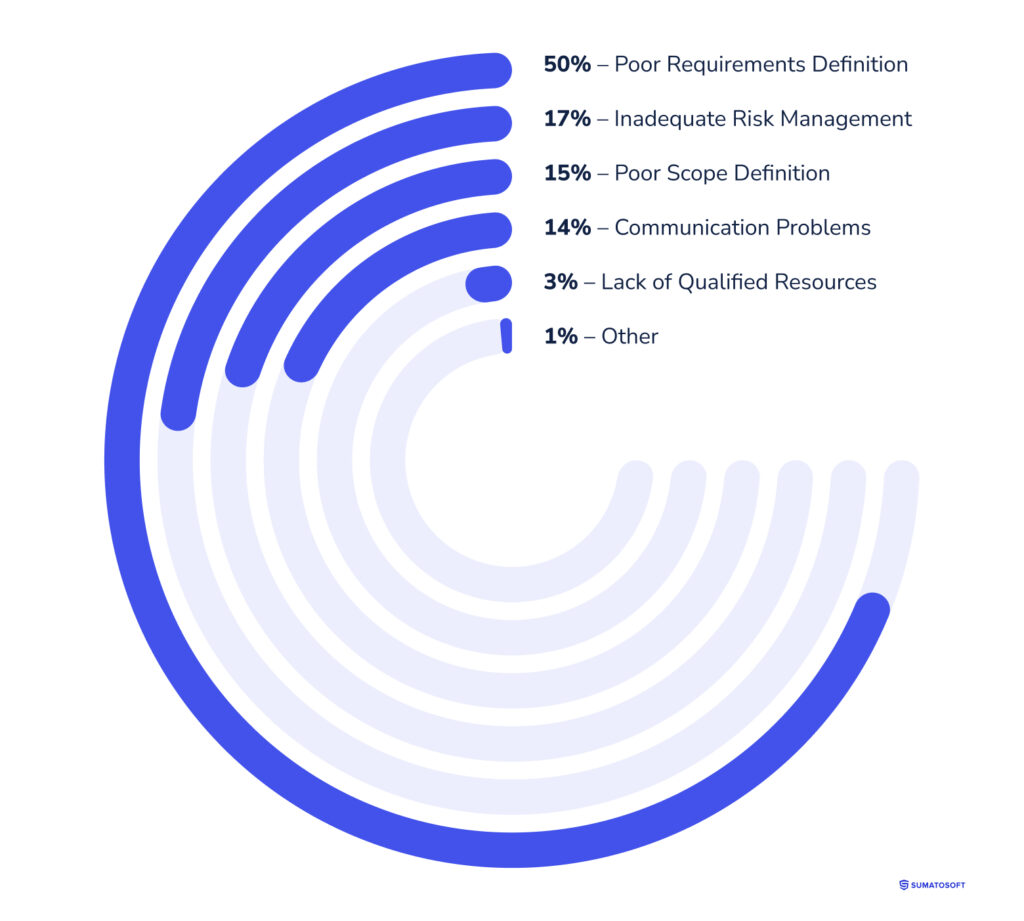
As a leading software development company with 9 years of experience, we can say that these figures are true. That is why we want to share with you our expertise about the Discovery Phase of a project that allows businesses to increase their chances of project success up to 50%!
We split our article into 3 logical parts:
In Part 1 we make a Discovery Phase overview. We look at its meaning, participants, purposes, how much time it takes and money required, who participates in it.
In Part 2, we describe how we run the Discovery Phase in agile for our clients and lead them to success. We also list the tools we use during this phase.
In Part 3, you will read about what our clients get as a result of the Discovery phase and what benefits they reap.
For those who prefer to get information in a condensed form, we prepared a table with key messages about the project Discovery Phase.
Enjoy reading!
A Discovery Phase in One Table
| Key definitions | Details |
|---|---|
| What is | The research of requirements and business goals at the very beginning of the project |
| Purposes | Precise budget and timeframe estimation The comprehensive shared vision of the whole project The development team gets tools to make a great solution Less uncertainty |
| Participants | Project manager, Business Analyst, Technical expert, UX/UI designer (optional), Software architect |
| Top benefits | From 1 to 3 months From 15.000$ to 25.000$ |
| Duration and price | From 1 to 3 months From 15.000$ to 25.000$ |
| Key steps | Step #1: The Initial interview. Requirements elicitation. Step #2: The discovery of users and their needs Step #3: Writing of the Vision and Scope document Step #4: Prototyping Step #5: Documentation of Software Requirement Specification (SRS) |
| Key deliverables | Product Vision and Scope Software requirements specification (SRS) Prototype designed at a high level Development roadmap with timeline and budget |
Part 1: A Comprehensive Guide to the Discovery Phase
What is a Discovery Phase
A project Discovery Phase (also known as a discovery phase) is the research of requirements and business goals at the start of the software development project. This is an initial stage at which we:
- flush out your business goals (what you want to achieve)
- hold user research, identify your target audience and their needs and requirements (what user issues you want to solve)
- define the scope of work
- estimate risks and assumptions
- find the best technical solution
- create a vision of the solution
- and last but not least, we document all this information.
During this phase, we aim to understand the context of product use, explore the subject area, and analyze competitors’ solutions to avoid common pitfalls and ensure the product aligns with market needs. If a product already exists, usability testing may be conducted to assess how efficiently users interact with it and their satisfaction level. This helps refine the product concept early on. We also cover topics such as:
- Design
- Working environment (devices and platforms)
- Technical preferences (e.g., databases)
- Integrations with third-party service providers
- Legislation limitations
- Localization
- Performance
- Reliability
- Security
- And much more.
What are the Purposes of a Discovery Phase
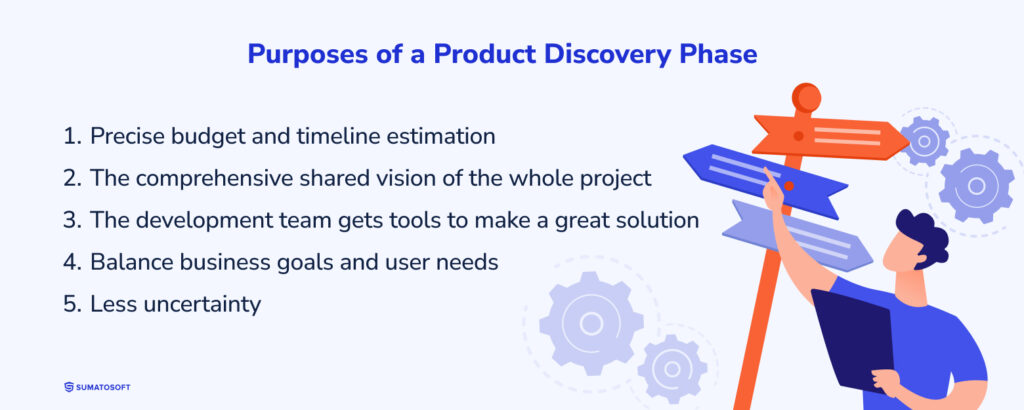
The positive effect of a Discovery Phase on development is hard to underestimate. We want to mention 4 goals for conducting it:
Purpose #1 Precise budget and timeline estimation
The Discovery Phase of a project is the only possible option to make a precise estimation for a complex project since it reveals your goals, your client’s needs, the scope of work, external and internal limitations.
Purpose #2 The comprehensive shared vision of the whole project
Research results are fully documented. Hence, business goals, success metrics, user profiles, the project vision, and architecture become clearly defined for all stakeholders and become available anytime.
Purpose #3 The development team gets tools to make a great solution
Requirements lie at the very core of any software. The developers, designers, QA engineers use requirements in their work to make a great software product. Clearly defined requirements significantly increase the chances to release the product within timeframes, budget, and with due regard to business goals.
Purpose #4 Less uncertainty
Launching a new product is a risky venture. Just some examples are budget overrun, no-market fit, missing vital requirements, implementation of not an optimal solution, etc. The Discovery Phase of a project helps to remove most of the uncertainty.
Purpose #5: Balance business goals and user needs
The discovery phase ensures that the product aligns with both the client’s business objectives and the end users’ expectations. By studying the target audience and their challenges, the team can identify and prioritize features that deliver value to users while meeting business requirements, creating a product that is both competitive and user-centric.
Participants Of a Discovery Phase Of a Project
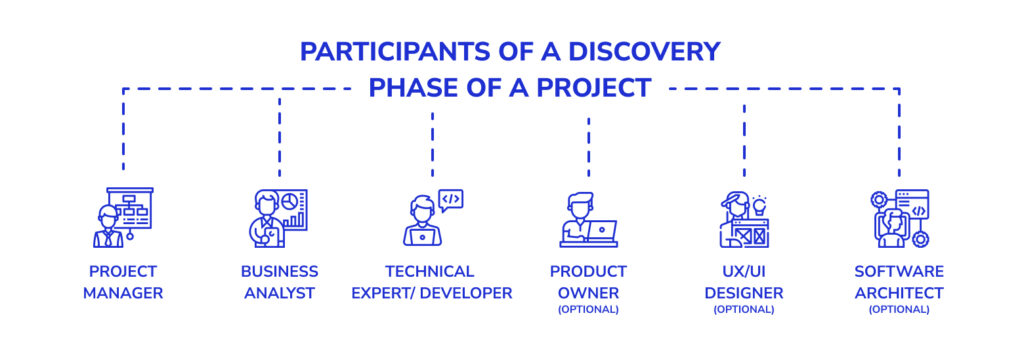
Normally, a product owner, an IT project manager, a business analyst, and a technical expert form a team that can handle this phase. However, the more complex the project, the larger the team may become. From our perspective, we can list the following specialists:
Project Manager
Responsible for flawless communication between the discovery team and the client. This specialist is accountable for planning, tracking the progress of the phase, and ensuring the timely delivery of artifacts of due quality. They may also integrate communication tools like Slack, email, or IVRs to streamline interactions.
Business Analyst
Business analysts do the research and prepare 80-100% of the final documentation. BA must have various specific skills to spot the challenges and find solutions for them. They translate business goals into functional and non-functional requirements, ensuring the system logic aligns with stakeholder needs.
Good Business Analysts have a very clear vision of what information they should ask about to make sure that they will be able to move on with the project analysis. And you should be ready to answer these questions.
Technical Expert/Developer
Technical experts don’t do any documentation, but it’s almost impossible to build a quality software product without consultation with technical experts, like SEO specialists, backend/front-end developers. Their expertise is priceless and opens the door to build robust and effective systems. They also analyze discovery artifacts to ensure the proposed business logic is technically feasible and suggest optimal architectural solutions.
Product Owner (Optional)
The key responsibilities of a Product Owner are to define user stories and create, update, and keep a product backlog. An IT Project Manager can cover these responsibilities as well.
UX/UI Designer (Optional)
Usually, projects require preparing prototypes, user journey maps, and wireframes. Often this work can be done by the analyst, but sometimes the project team also connects a separate UI/UX designer to explore design decisions tailored to the target audience, answering “who are we designing for?” and “how should we design things?” to enhance user experience.
Software Architect (Optional)
While working with the most complex projects, it’s possible to attract software architects to make high-level decisions about the optimal stack of technologies to use in product development.
Duration and Price of the Discovery Phase of a Project
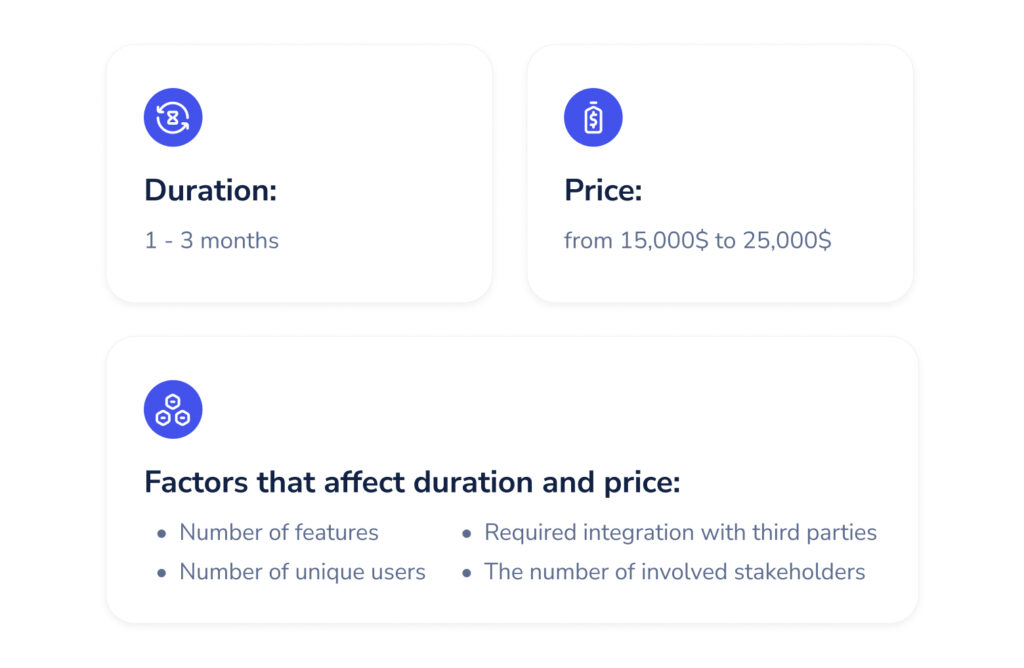
These two parameters vary from project to project. A comprehensive project Discovery Phase for huge international companies can cost 100.000$+ and last for a year. After 9 years of experience in the software development market, we can give the following figures:
The duration: from 1 to 3 months.
The price: from 15,000$ to 25,000$.
This is a reasonable price for high-quality research. We have to admit that lower values don’t imply the worse quality of research since there are a lot of variables that influence the discovery costs. But that means you take additional risks of possibly hiring unskilled specialists. Figures that exceed the values above are likely overpriced – ask such companies to explain the cost of their services.
That is all for the first Part. Now you are aware of the key theoretical concepts about the Discovery Phase of a project. It’s time to set eyes on the discovery process itself.
Part 2: How We Run a Discovery Phase For Our Clients
We describe all steps in the project Discovery phase and the tools we use in this section. However, every step should have some purpose, otherwise, its necessity is called into question. So we also mention the set of goals we want to achieve in every step.
5 Steps in The Discovery Phase of a Project
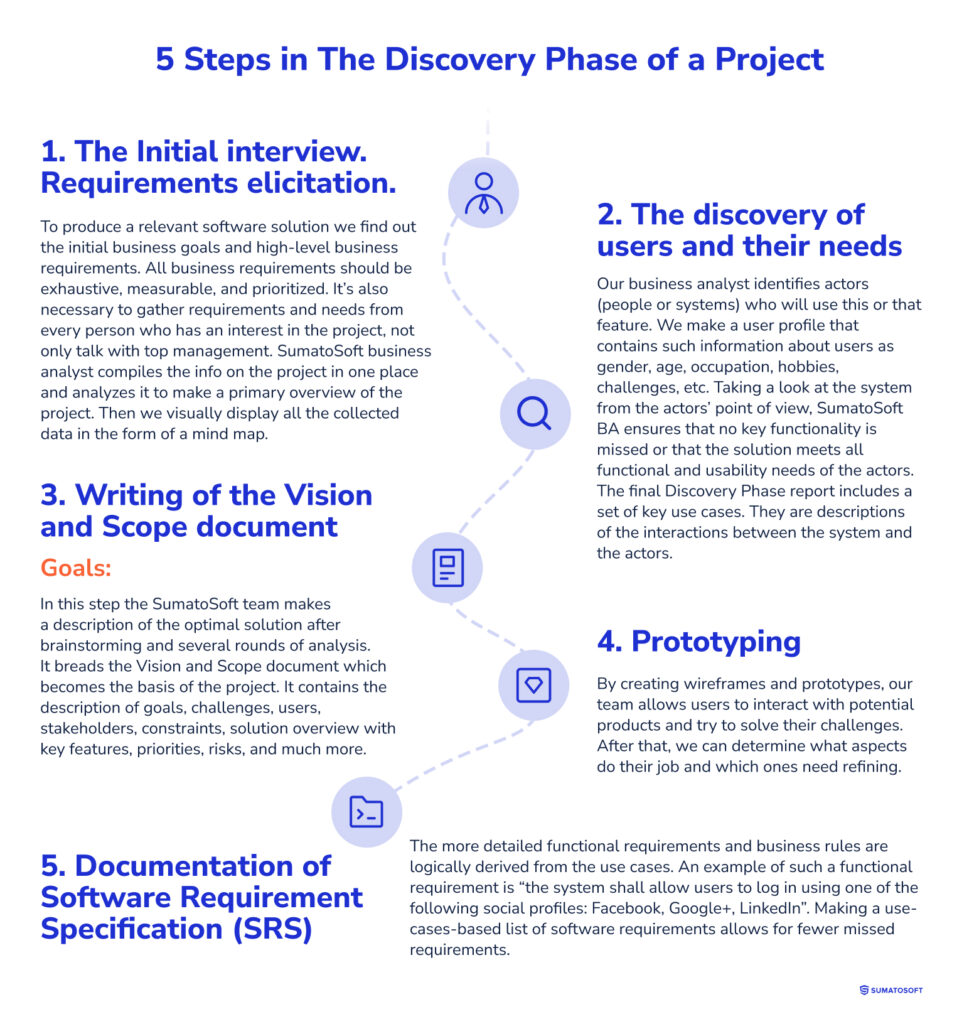
Step #1: The Initial Interview. Requirements Elicitation
Goals:
- To gather high-level business requirements
- To gather the info on the project from stakeholders
- To make a project overview from a business point of view
- To roughly evaluate the scope of work
- To understand the customer’s business processes
To produce a relevant software solution, we find out the initial business goals and high-level business requirements. All business requirements should be exhaustive, measurable, and prioritized. It’s also necessary to gather requirements and project needs from every person who has an interest in the project, not only top management. To make an optimal solution, it’s also required to take into account the peculiarities of the industry where the solution will be implemented and thoroughly understand the customer’s business processes to ensure the product supports their operations effectively. Once the information on the project is gathered, we compile it in one place and analyze it to make a primary overview of the project. Then we visually display all the collected data in the form of a mind map.
“This step is not only about requirements identification. Most importantly, it helps to discuss business needs and goals and match them with the appropriate tech solution and implementation.”
Step #2: The Research of Users and Their Needs
Goals:
- To elicit users who will interact with the product
- To elicit the challenges users want to solve
- To validate the product-market fit
- To check that there are no missed important requirements
- To analyze competitors’ solutions
Our business analyst identifies actors (people or systems) who will use this or that feature. We make a user profile that contains such information about users as gender, age, occupation, hobbies, challenges, etc. For example, any website has at least two actors: a non-registered user and an administrator.
The final Discovery Phase report includes a set of key use cases, which are descriptions of the interactions between the system and the actors. For example, actions described as “adding an item to a customer’s order” are a use case. This step is important as it clearly explains how real users are going to use the system, leading to less vagueness in requirements development.
Additionally, we analyze competitors’ solutions to identify best practices and avoid mistakes, ensuring the product is competitive.
One more item to mention here is a customer journey map, a visual representation of the customer experience while communicating with the product.
Step #3: Writing of the Vision and Scope Document
Goals:
- To capture the most important information in one place
- To share the vision of the project across all stakeholders
- To set the scope of work
- To prioritize requirements and form a backlog
In this step, the SumatoSoft team describes the optimal solution after brainstorming and several rounds of analysis. It creates the Vision and Scope document, which becomes the basis of the project. It describes project goals, challenges, users, stakeholders, constraints, and solution overview with key features, priorities, risks, and much more. This step also involves prioritizing requirements based on business value, risks, interdependence, volume, and deadlines to form a product backlog, ensuring a clear development path. By making this step, you ensure that no scope creep occurs in the future. This document establishes clear expectations, reduces risks, and becomes a guarantee that the final product will meet the business’s and users’ needs and requirements.
Step #4: Prototyping
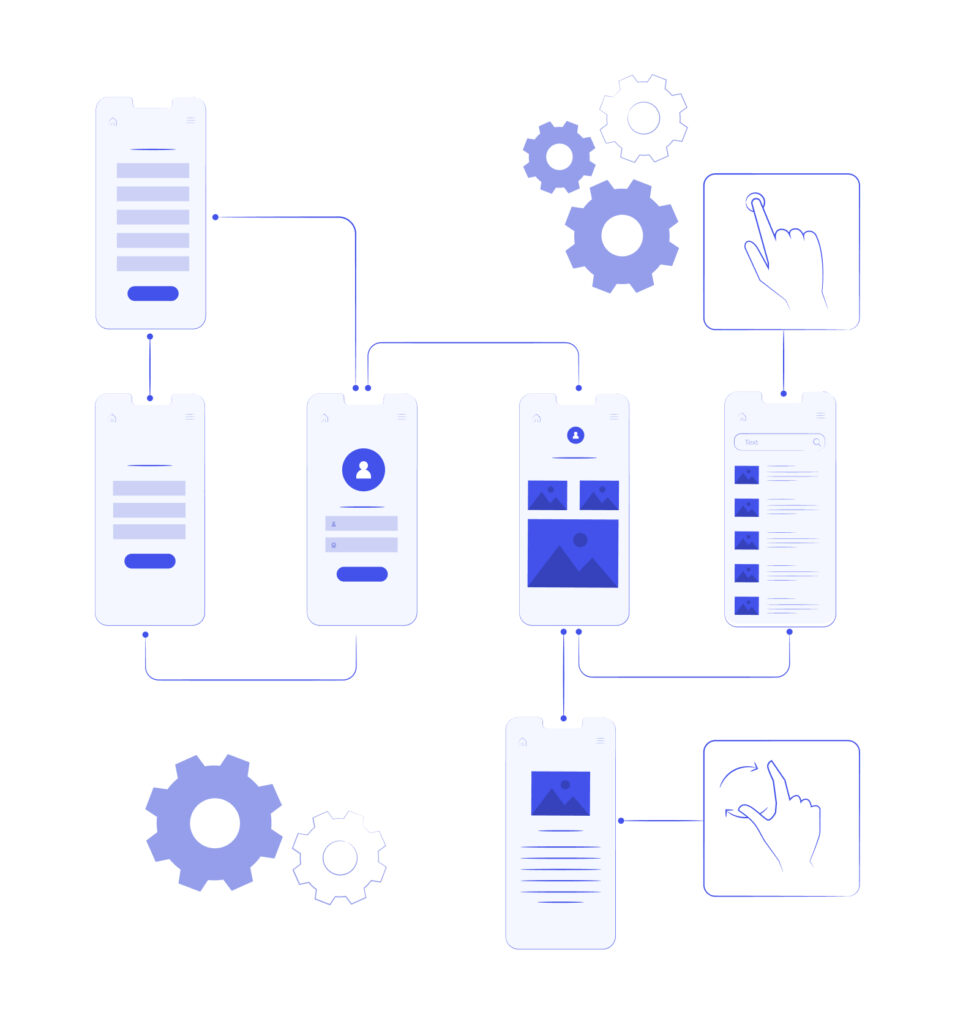
Goals:
- Test the hypothesis about how to solve users’ challenges
- Gather more accurate and detailed requirements
- Identify and eliminate bottlenecks
By creating wireframes and prototypes, our team allows users to interact with potential products and try to solve their challenges. After that, we can determine which aspects do their job and which ones need refining. Prototyping also helps identify bottlenecks that could cause issues like poor product quality, dissatisfied users, or increased costs if not addressed early.
Step #5: Documentation of Software Requirement Specification (SRS)
Goals:
- To split use cases into components to develop
- To reduce later redesign risks
- To reduce the chances of requirement creep
- To prepare the documents to make a precise budget and timeline estimation
The more detailed functional requirements and business rules are logically derived from the use cases. An example of such a functional requirement is “the system shall allow users to log in using one of the following social profiles: Facebook, Google+, LinkedIn”. Making a use-cases-based list of software requirements allows for fewer missed requirements.
Tools We Use During the Discovery Phase Of a Project
There is an extensive set of tools that we actively use during the Discovery Phase:
- Mind Map – a very useful tool to visually structure any set of ideas. We use it to find, describe, and examine some concepts and solutions.
- User Story – one of the artifacts that is created during the Discovery Phase of a project. It explains how the system should work from the perspective of the end-user. QA engineers then use user stories to check the correctness of the work after the development.
- Use case model – helps us to illustrate how different types of users interact with the system to solve a problem.
- BPMN Charts (business process modeling notation chart) – this tool can be used to display the process flow, the document flow, the status changes, and more. It’s an indispensable tool when we work with complex systems.
- Request-Response Model – the title explains the value of this model. It reveals where and why the system gets/sends requests and how it can handle them.
- Wireframes software
Part 3: What Clients Get as a Result of The Discovery Phase
What are the Deliverables Of the Discovery Phase Of a Project
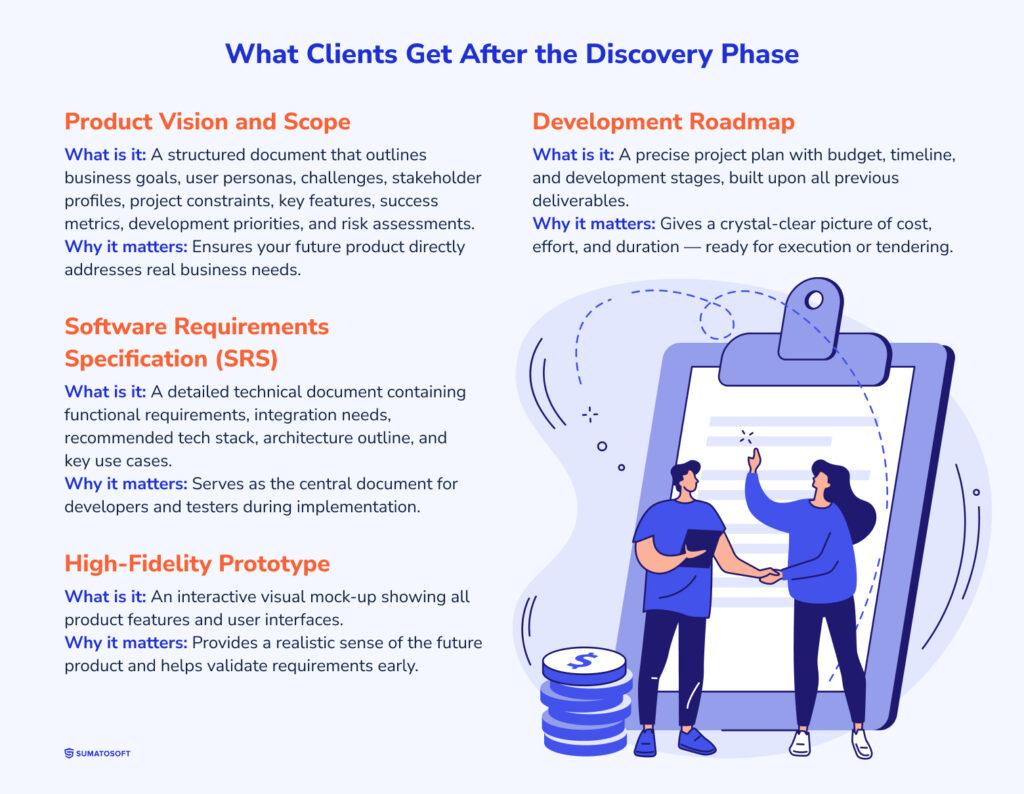
Product Vision and Scope
What is: A document with the description of high-level business requirements (goals, challenges, stakeholder profiles, success metrics), user portrait, project constraints, the vision of a future product, priorities of feature development, and risk assessment.
What for: Necessary to ensure the final product meets business needs.
Software requirements specification (SRS)
What is: A document with a nuanced description of the software product. It includes functional requirements, text about integration, recommended tech stack, described architecture, and use cases.
What for: The basis for SRS is the Product Vision and Scope and SRS, in turn, will become the main document during the coding and testing stages.
Prototype designed at a high level
What is: Visual user interfaces (quite often they are interactive) with the representation of all features of the product.
What for: Prototypes and SRS give a complete feel and understanding of the future product.
Development roadmap with timeline and budget
What is: The final plan of the development is based on three previous deliverables. The budget and timeline are very precise and can be changed only in case of serious scope and requirement changes during the development.
What for: That final deliverable gives a complete picture of how much effort, time, and money it will take to develop a project.
With these discovery phase deliverables, a business can ask any company to build the product. You can also choose the SumatoSoft company because there is a bunch of reasons for that choice.
Top 8 Benefits of a Discovery Phase
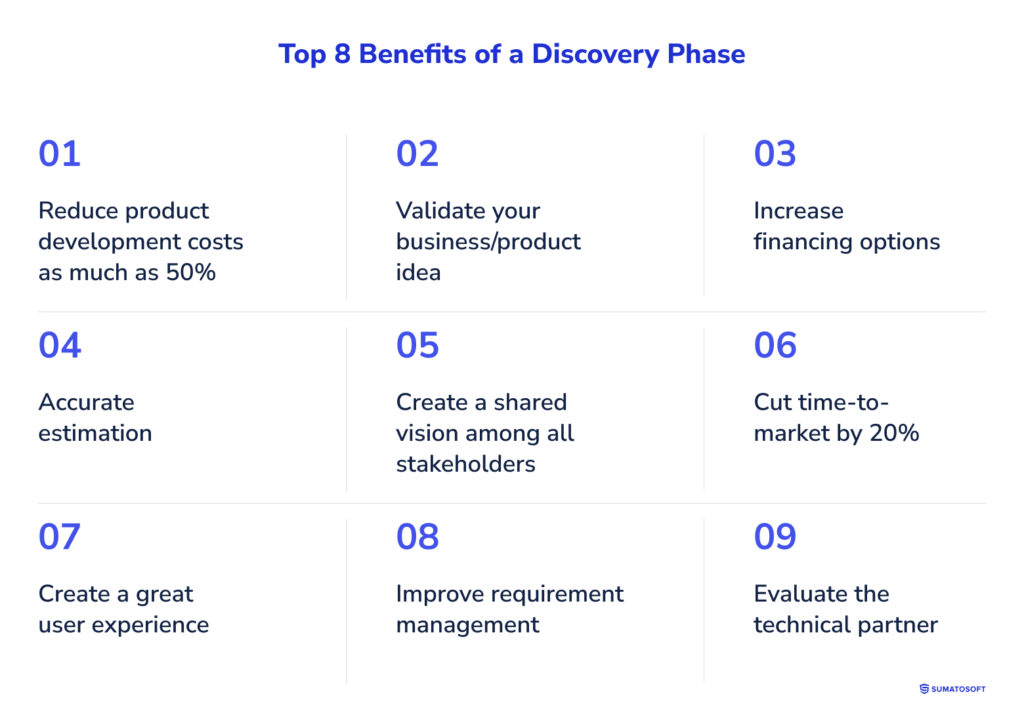
Benefit #1: Reduce product development costs as much as 50%
The project Discovery Phase decreases the chances of finding a missed requirement during the development or after the release. The development of new vital features after deployment can cost several times more than it would have at the beginning of the project. Besides, the Discovery Phase of a project helps to avoid expensive alterations of existing features.
Benefit #2: Validate your business/product idea
The relevance of building a new piece of software or an additional system is a big question. The Discovery Phase of a project identifies the product’s possibilities to satisfy users’ needs as well as to meet business needs.
Benefit #3: Increase financing options
The developed documentation, wireframes, and market research increase the chances of attracting financing.
Benefit #4: Accurate estimation
If a software development company makes a business proposal with timeframes and budget after the Discovery Phase of a project, the estimation is likely not to be altered later. But be sure that you choose the right software development company.
Benefit #5: Create a shared vision among all stakeholders
A vision of a final solution is stored in documents, and everybody can view it. It significantly reduces the odds of confusion within the team on what they build.
Benefit #6: Cut time-to-market by 20%
As a result of the precise budget, timeframe, and clearly defined amount of work, the time-to-market is cut by up to 20%.
Benefit #7: Create a great user experience
The team forms the most optimal solution to create a user experience so users would love to use the product, based on a thorough study of the target audience and their expectations.
Benefit #8: Improve requirement management
The BA watches over the process of translating business requirements through functional requirements to a solution specification so that every requirement is understood, interpreted, and realized by all parties the right way.
Benefit #9: Evaluate the technical partner
The discovery phase allows the customer to assess how well the technical partner meets expectations and whether the partnership is comfortable, helping inform decisions about further cooperation.
SumatoSoft Is a Reliable Partner to Run the Discovery Phase
Every project we undertake starts from a nuanced business analysis. We have more than 100 successful projects in various industries like eCommerce, Elearning, Finance, Real Estate, Transport, Travel, and more. After more than 9 years of work, we have established a flexible Discovery process for different time and budget limitations.
- Our clients’ satisfaction rate is 98%, thanks to our strong commitment to deadlines and their needs.
- We use the latest knowledge about business analysis in our work.
- We have a deep expertise that allows us to develop the right solutions.
- We are a member of The Council for Inclusive Capitalism.
- We are recognized as top software developers by leading analyst agencies like techreviewer, clutch, and goodfirms.
- We are ready to offer your excellent results for a reasonable price.
- We are the right team for your project
Get in touch with us for a free consultation. Let’s build a new product together.
Final words
The Discovery Phase of a project helps businesses and developers to make documents that become a guiding start during the development. There are numerous benefits this phase brings, as well as significantly reducing risks and uncertainty in the project.
Unfortunately, the Discovery Phase does not guarantee that the project will be successful. But the truth is that nothing can guarantee this. And yet, running a discovery phase of a project will significantly increase the chances of success and that the project will be delivered on time and within budget, and will also bring real value to final users.
Thanks for reading!
Let’s start
If you have any questions, email us info@sumatosoft.com

